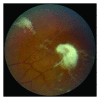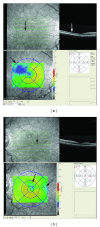Beyond the definitions of the phenotypic complications of sickle cell disease: an update on management
- PMID: 22924029
- PMCID: PMC3415156
- DOI: 10.1100/2012/949535
Beyond the definitions of the phenotypic complications of sickle cell disease: an update on management
Erratum in
- ScientificWorldJournal. 2013;2013:861251
Abstract
The sickle hemoglobin is an abnormal hemoglobin due to point mutation (GAG → GTG) in exon 1 of the β globin gene resulting in the substitution of glutamic acid by valine at position 6 of the β globin polypeptide chain. Although the molecular lesion is a single-point mutation, the sickle gene is pleiotropic in nature causing multiple phenotypic expressions that constitute the various complications of sickle cell disease in general and sickle cell anemia in particular. The disease itself is chronic in nature but many of its complications are acute such as the recurrent acute painful crises (its hallmark), acute chest syndrome, and priapism. These complications vary considerably among patients, in the same patient with time, among countries and with age and sex. To date, there is no well-established consensus among providers on the management of the complications of sickle cell disease due in part to lack of evidence and in part to differences in the experience of providers. It is the aim of this paper to review available current approaches to manage the major complications of sickle cell disease. We hope that this will establish another preliminary forum among providers that may eventually lead the way to better outcomes.
Figures






References
Publication types
MeSH terms
Substances
Grants and funding
LinkOut - more resources
Full Text Sources
Medical

